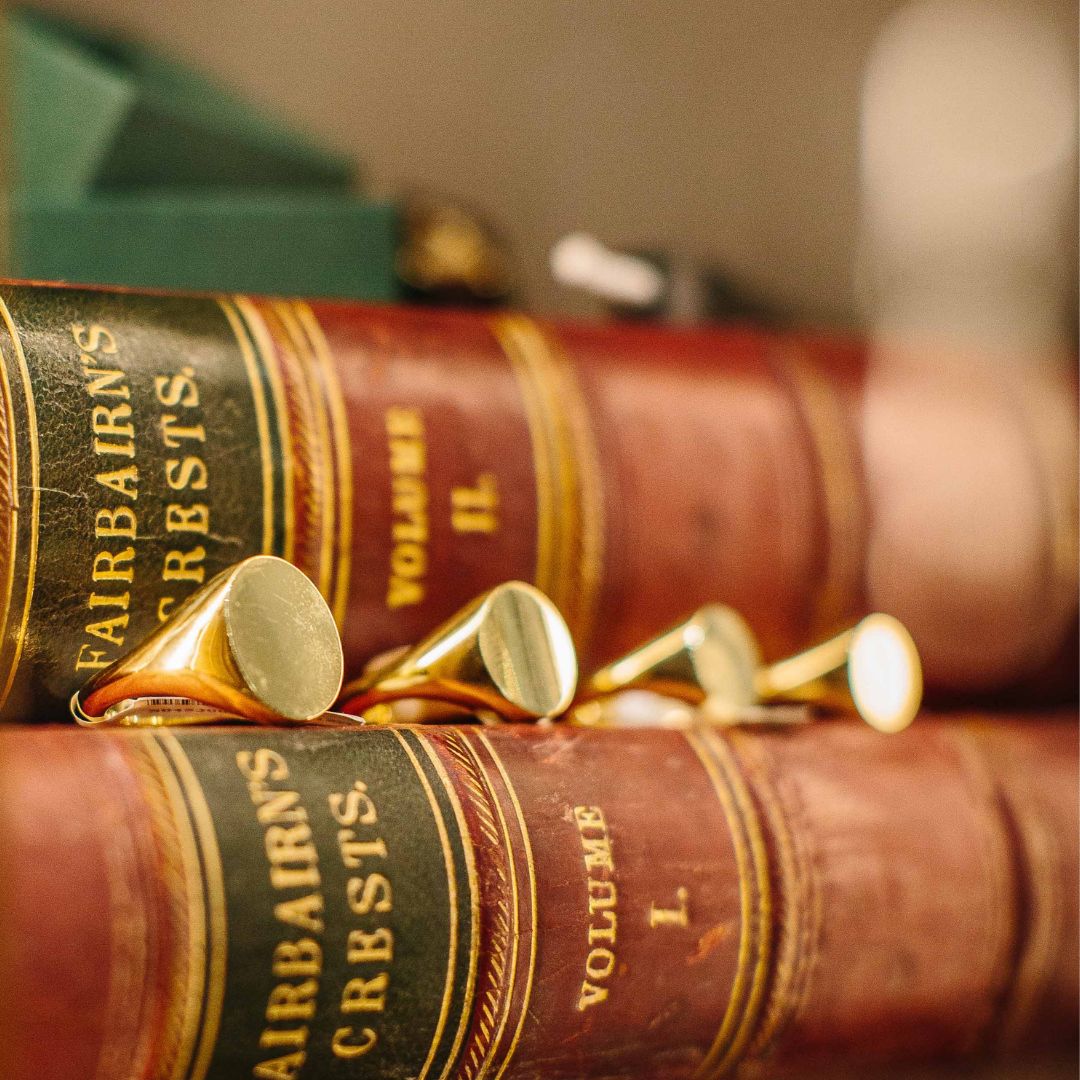
Some jewelry is for fashion.
Other jewelry is for tradition and sentimental value.
Then there's jewelry that means something.
Signet rings are jewelry that comes with meaning.

In times of ancient Egypt or Victorian England, signet rings weren't just pretty. They were functional. Leaders, nobles, and important figures wore them as personal seals. Instead of signing a document, you'd press the face of the signet ring into wax to give it your "stamp" of approval.
Dignitaries of times gone by never imagined things like facial recognition on your phone or tiny chips to pay for groceries. Since you no longer need a ring to prove your identity, your signet ring is more about telling people who you are and where you came from.
Who's Wearing Signet Rings Today?
Anyone who wants to tell their story.
It might be a family crest, a meaningful symbol, your initials-or just a classic blank face that lets the ring itself do the talking. It's a nod to tradition with modern flair.
Wearing a Signet Ring
Traditionally, signet rings are worn on the pinky finger of your non-dominant hand. It's elegant, sometimes rebellious, and always personal.
There's no firm rule that it needs to be on your non-dominant hand, of course. Righties who are married will often don their signet ring on the opposite hand.
Yes. You're Seeing More Signet Rings Today.
According to fashion experts, there's a trend toward jewelry that's yours. These are special pieces that are often gender-neutral, customizable, full of history. It's how people are creating a bridge from modern styles to old, cultural roots.
While you may be seeing them more and more, signet rings have been with us for millennia. Like your name or heritage, signet rings have never gone away. Some put a family crest, important initials, or the flag of their nationality. While others take a clean and sleek approach. There are dozens of ways a signet ring can help you make your statement.
Visit us at Sylvan's Jewelers in Columbia to explore our assortment of signet rings today!


